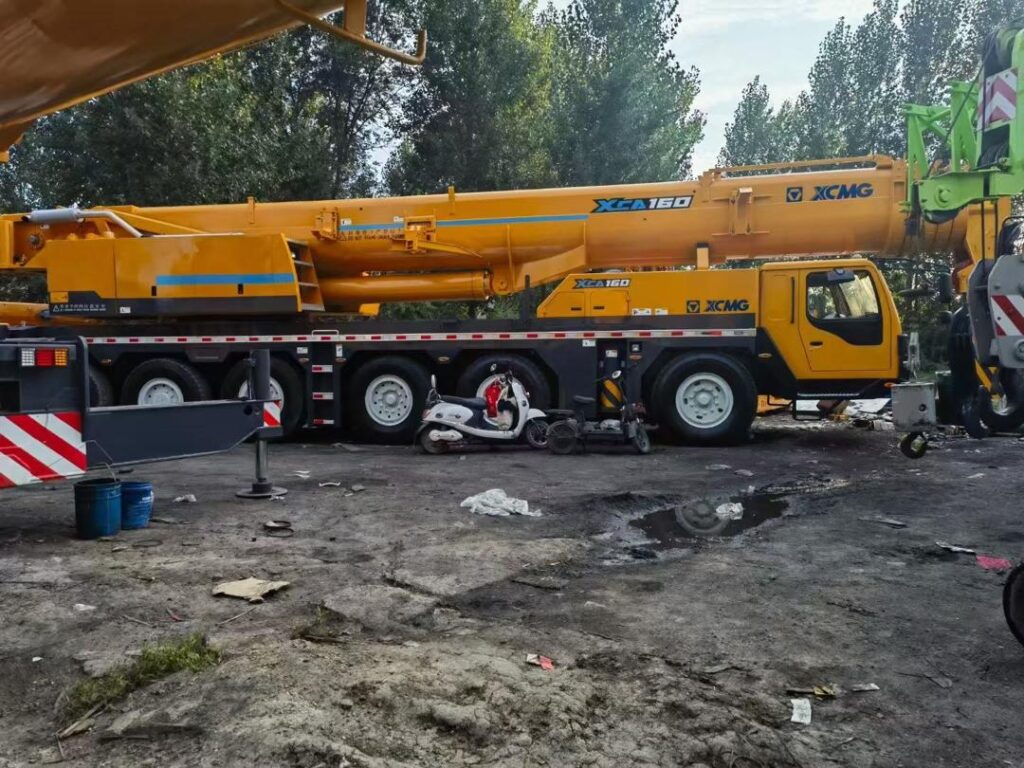Why Crane Maintenance is Important

Important Crane Maintenance Advice for Durable Performance
In the heavy lifting and construction sectors, cranes are essential for the safe and effective transportation of commodities. However, routine maintenance is essential to preserving safety and optimum performance. In addition to increasing operational effectiveness, a well-maintained crane prolongs its lifespan and helps avoid expensive repairs and unplanned malfunctions.
We will go over important **crane maintenance tips** in this extensive guide to keep your equipment in optimal condition, minimize downtime, and improve safety.
## The Significance of Crane Maintenance
Cranes work in harsh environments and lift heavy loads. Frequent maintenance guarantees: **Safety**: Lowers the possibility of mishaps and equipment malfunctions.
**Longevity**: Increases the crane’s lifespan and reduces the need for replacements.
**Efficiency**: Reduces downtime and maintains seamless operations.
**Compliance**: Fulfills industry standards
Daily
Crane lubrication
Checklist
To maintain a crane’s performance, operators should perform daily inspections before each shift. Here are the key areas to check:
1. Inspect Wire Ropes and Hooks
- Look for signs of wear, corrosion, or fraying on the wire ropes.
- Ensure hooks are not bent or damaged.
- Check safety latches for proper functionality.
2. Check Hydraulic Systems
- Inspect hoses and connections for leaks or cracks.
- Ensure hydraulic fluids are at proper levels.
- Test the system for smooth operation.
3. Test Brakes and Controls
- Verify that emergency brakes function properly.
- Test control buttons and levers for responsiveness.
- Ensure no unusual noises or delays in movement.
4. Monitor Load Capacity and Stability
- Never exceed the recommended load limit.
- Check for proper counterweight positioning.
- Ensure load is balanced before lifting.
🔗 Learn More About Load Management

Weekly and Monthly Maintenance Tasks
While daily inspections focus on immediate safety concerns, weekly and monthly maintenance ensures long-term performance.
5. Lubricate Moving Parts
Friction between components can cause wear and tear. Regular lubrication helps to:
- Reduce friction and prevent overheating.
- Extend the lifespan of moving parts.
- Maintain smooth crane operation.
6. Inspect Electrical Components
Electrical failures can cause operational issues and safety hazards. To prevent this:
- Check wiring and connections for wear or corrosion.
- Test battery levels and replace if needed.
- Ensure lighting and indicators function properly.
🔗 Explore Crane Electrical Maintenance
7. Evaluate Structural Integrity
Over time, stress and load impact can weaken a crane’s structure. Regular structural inspections include:
- Checking for cracks or rust in metal components.
- Inspecting welds for any signs of weakness.
- Ensuring bolts and fasteners are secure.
Seasonal and Annual Crane Maintenance
8. Perform Load Testing
Annual load testing ensures that cranes operate at full capacity without safety risks. This process involves:
- Lifting a load at the crane’s maximum capacity.
- Observing for any abnormal movements or signs of strain.
- Adjusting mechanisms if necessary.
9. Replace Worn-Out Parts
To prevent sudden failures, replace components showing signs of wear, including:
- Bearings and gears
- Hydraulic cylinders
- Electrical components
10. Update Software and Safety Features
Modern cranes often come with electronic safety features. Regular updates help:
- Improve automation and precision.
- Fix system bugs or outdated settings.
- Enhance operator efficiency.
Best Practices for Crane Maintenance
To maintain an efficient crane maintenance routine, follow these best practices:
- Train Operators Regularly: Educate crane operators on recognizing maintenance issues early.
- Keep Maintenance Records: Log all inspections, repairs, and replacements.
- Follow Manufacturer Guidelines: Adhere to recommended service intervals and procedures.
- Use Genuine Spare Parts: Avoid cheap, low-quality replacements that may compromise performance.
🔗 Enroll in Crane Maintenance Training
Conclusion
Proper crane maintenance is essential for safety, efficiency, and long-term cost savings. By following these tips, you can prevent costly downtime, improve performance, and ensure compliance with safety regulations.
For high-quality crane parts, accessories, and expert services, visit CraneKart today!






